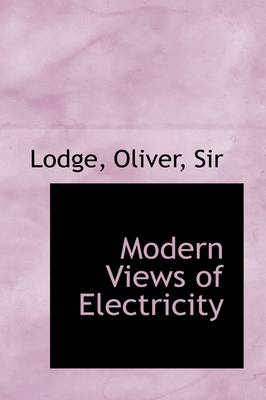Cambridge Library Collection - Technology
3 total works
In 1889, a year after both he and Heinrich Hertz discovered electromagnetic waves and for the first time demonstrated the truth of Maxwell's great theory of the electromagnetic field, physicist Oliver Lodge (1851-1940) published his deepest reflections on the nature and meaning of electricity, how it originates, and its different manifestations. There had been great scientific advances - the work of Faraday and Maxwell, his own experiments and those of Hertz - and a revolution in technology. There were also puzzling questions. What is the connection between electricity and the ether that occupies space? How does electricity manifest itself in matter? Why does it come in fixed units? The discovery of the electron eight years later would offer crucial answers. Always lucid and direct, with a gift for making the difficult seem simple, Lodge engages the reader with his fascination for the subject, much as he did in his famous lectures.
The early 1890s saw the development of wireless telegraphy. Although the behaviour of radio waves had been predicted by James Clerk Maxwell, the production of a working coherer occupied some of the greatest practical physicists of the time. A giant in the field was Heinrich Hertz (1857-94), who was among the first to discover that radio waves could travel independently of wires. When Hertz died, his work was continued and soon led to the development of the first wireless radios. This book, published in 1900, is the third edition of Sir Oliver Lodge's popular explanation of Hertz's work. Including the Royal Institution lecture that Lodge (1851-1940) gave in 1894, along with detailed diagrams, it covers the basic principles of radio waves and some of the theory surrounding telegraphic technology. Also included in this reissue is Lodge's 1924 lecture on electrical precipitation, discussing the scintillating possibility of altering atmospheric conditions through the use of electrical charges.
As a result of being asked to give public lectures on the subject, the eminent physicist Oliver Lodge (1851-1940) published in 1892 a pioneering study of the protection of buildings, cables and telegraphic instruments from the devastation caused by lightning strikes. This work led him almost immediately to the discovery of electromagnetic wave transmission and ultimately to the development of a version of radio telegraphy. Lodge also saw that many of the current theories about the nature of lightning were seriously in error, and his investigations led to a number of significant changes in the design of lightning conductors and lightning guards. Some of the methods and procedures that Lodge advocated have since become standard practice. They are described with Lodge's characteristic flair and accompanied by a wealth of illustrations that give a fascinating insight into how contemporary scientists and engineers tackled this significant problem.

